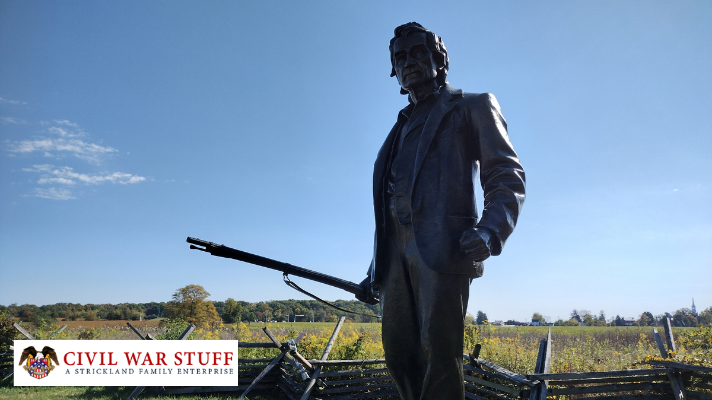John Burns: Gettysburg Native

In July 1863, as the Civil War descended upon the town of Gettysburg, John Burns was in his seventies. A veteran of the war of 1812, Burns volunteered when the war first broke out but was rejected due to his age. He returned home to serve as Gettysburg’s town constable. It wasn’t a quiet life for John by any means. On June 26, as Confederate Jubal Early passed through Gettysburg, John was jailed until they moved on.
John Joins the Fight
On July 1, as the battle began to rage, Burns couldn’t help himself. Grabbing his flintlock musket, he told his wife, “I’m going to see what is going on.” He found the closest Union regiment and Major Thomas Chamberlin of the 150th Pennsylvania Infantry. After the battle several Union soldiers, including Chamberlain, recalled meeting Burns that day. One common thing they all remembered about Burns was his appearance, as described here by Chamberlain.
“His somewhat peculiar dress consisted of dark trousers and a waistcoat, a blue “swallow tail” coat with burnished brass buttons, such as used to be affected by well-to-do gentlemen of the old school about 40 years ago, and a high black silk hat, from which most of the original gloss had long departed, of a shape to be found only in the fashion plates of the remote past.”
Many questioned Burns’ ability to fight, but he was persistent. Finally, Chamberlain sent Burns to his commanding officer, Colonel Langhorne Wister, who sent Burns to the area of the McPherson Farm where he felt it would be safer. However, this was not the case.
That day John Burns stood shoulder to shoulder with the troops known as the Iron Brigade. The fighting was intense, and Burns suffered three wounds. As the Union forces eventually retreated through town, Burns was left behind. Burns ditched his rifle before Confederates arrived, asking him how a local resident came to be wounded on the battlefield. Believing his story that he was out looking for help for his sick wife when he became wounded by chance, Confederate surgeons attended to his wounds. He was able to make his way to a nearby house and was returned to his home.
After the Battle
As the fighting ended in Gettysburg and the soldiers packed up and left, John Burns became a local celebrity. He was named an honorary member of the Iron Brigade. When President Lincoln came to deliver his speech at the National Cemetery, he asked to meet Burns. They walked together from the Wills House, where Lincoln stayed, to the Presbyterian Church.
John Burns died in 1872 and is buried at Evergreen Cemetery.
A monument was dedicated to John Burns on July 1, 1903, the 40th anniversary of the battle. It stands upon a boulder taken from the battlefield.









